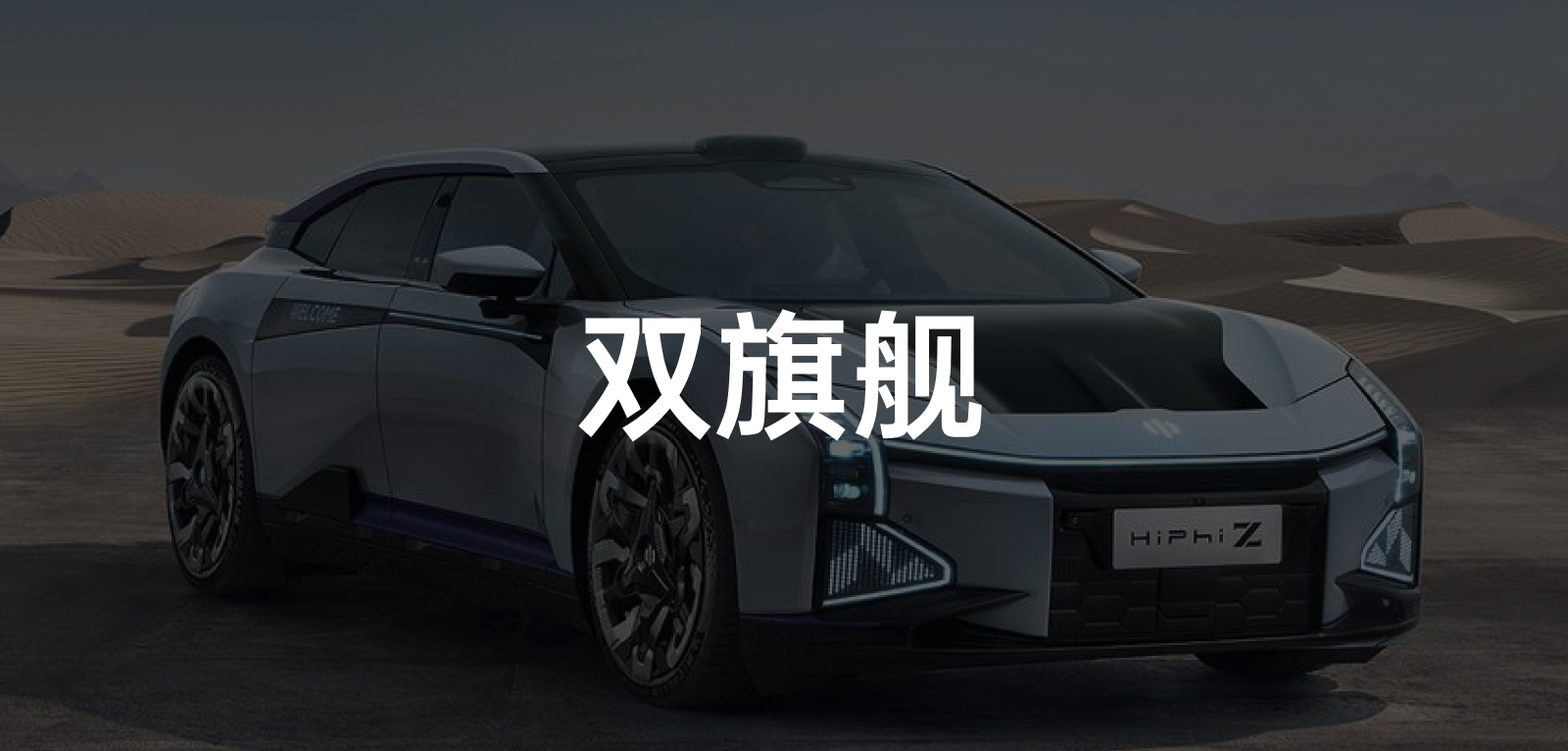On July 5th, GAC Neoteric (Highway Intelligent Pilot Entity, abbreviated as High) officially unveiled the production version of the HiPhi Z model online. At the same time, Ding Lei, the founder and chairman of High, announced the price range of the HiPhi Z, which is priced from 600,000 to 800,000 RMB.
Wait a minute, let’s take a look at the price range of High’s first model, the HiPhi X, which is priced between 570,000 and 800,000 RMB. Isn’t this almost identical to the price range of the second model? High did not pursue a top-down approach like Tesla or NIO on the HiPhi Z, nor did they constantly explore upwards like the IDEAL, so why did they make a vehicle with almost the same price range?
In the Name of GT
High positioned the HiPhi Z as a GT, which stands for “Gran Turismo” in Italian and means “Great Travel”. After the 1950s, this Italian word became popular in the English-speaking world and eventually became “Grand Tourer”.
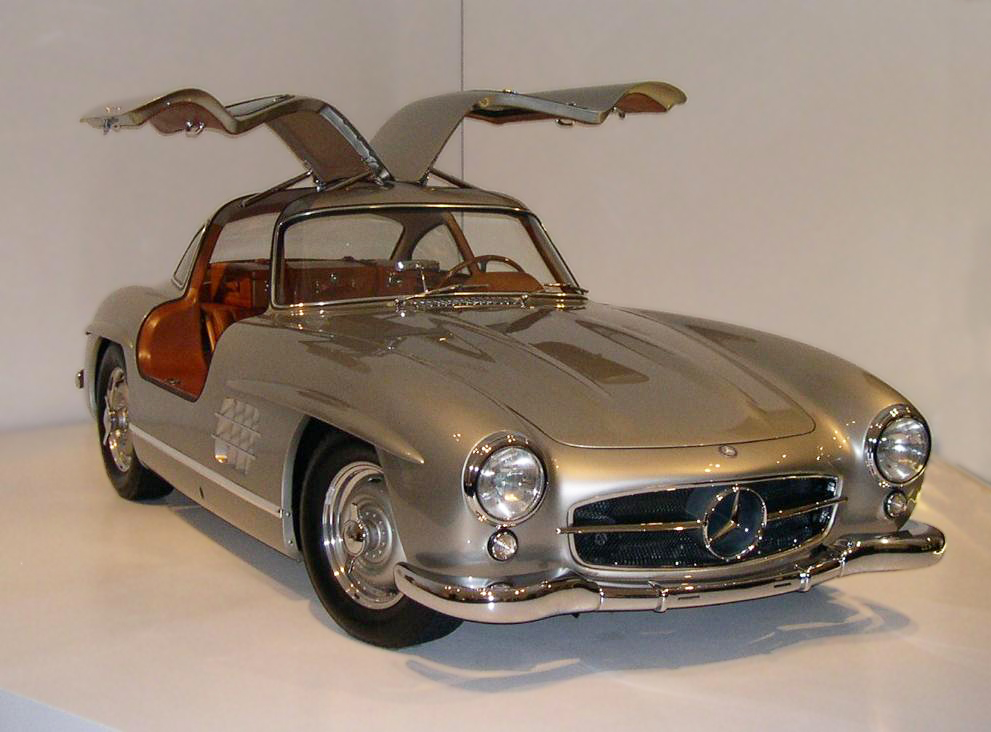
The biggest feature of GT models is luxury, while also having powerful performance and good comfort. Personally, I believe that a sleek exterior design is also a necessary feature, such as the classic GT models like the 1955 Mercedes-Benz 300SL, 1960 Maserati 3500 GT, and 1963 Aston Martin DB5.
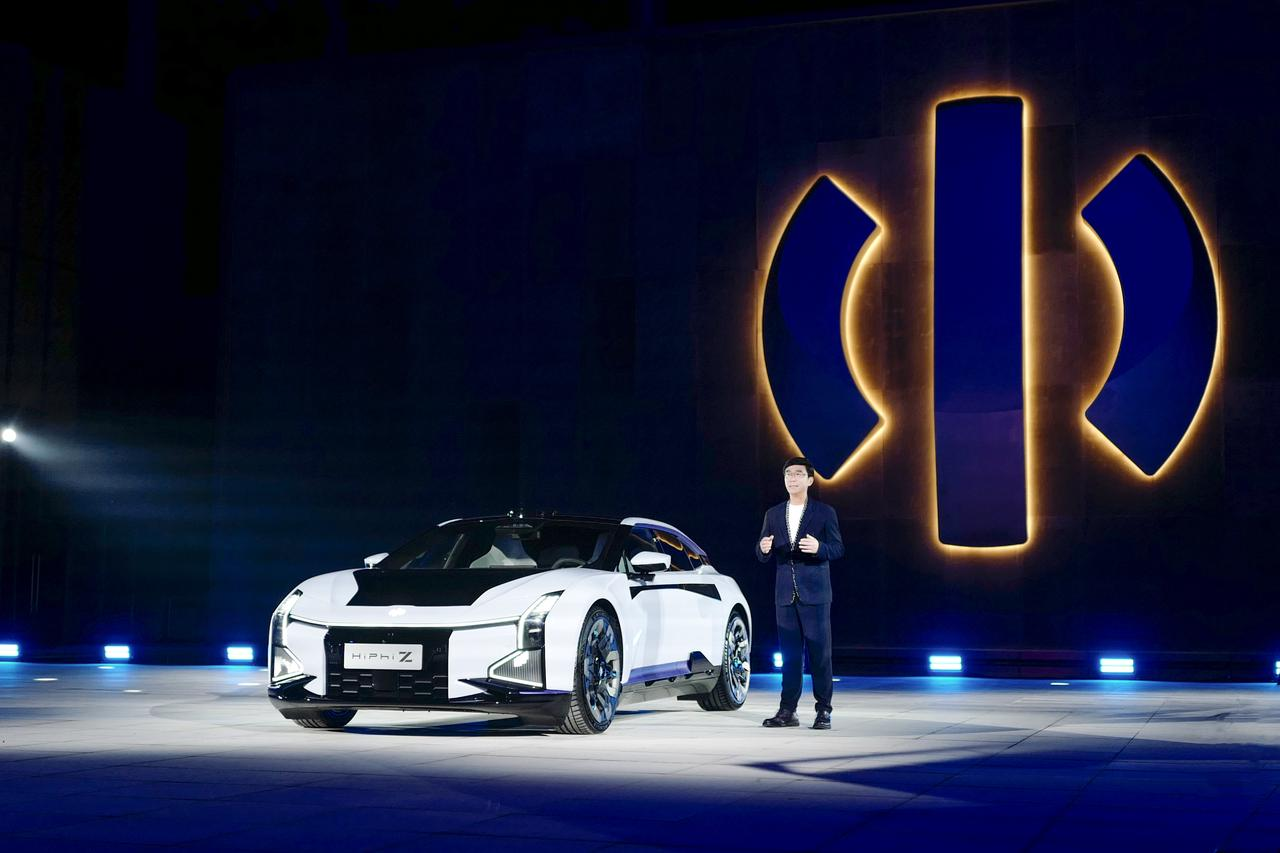
Since the HiPhi Z is positioned as a GT, let’s take a look at how High made a GT.
First of all, in terms of size, the HiPhi Z became sleek and long, with a length, width, and height of 5,036, 2,018, and 1,439 mm respectively, with a wheelbase of 3,150 mm. The length, width, and height of the previous coupe SUV model, the HiPhi X, are 5,200, 2,062, and 1,618 mm, with a wheelbase of 3,150 mm. It can be seen that the change in height is quite significant, which also matches the positioning of a sedan.
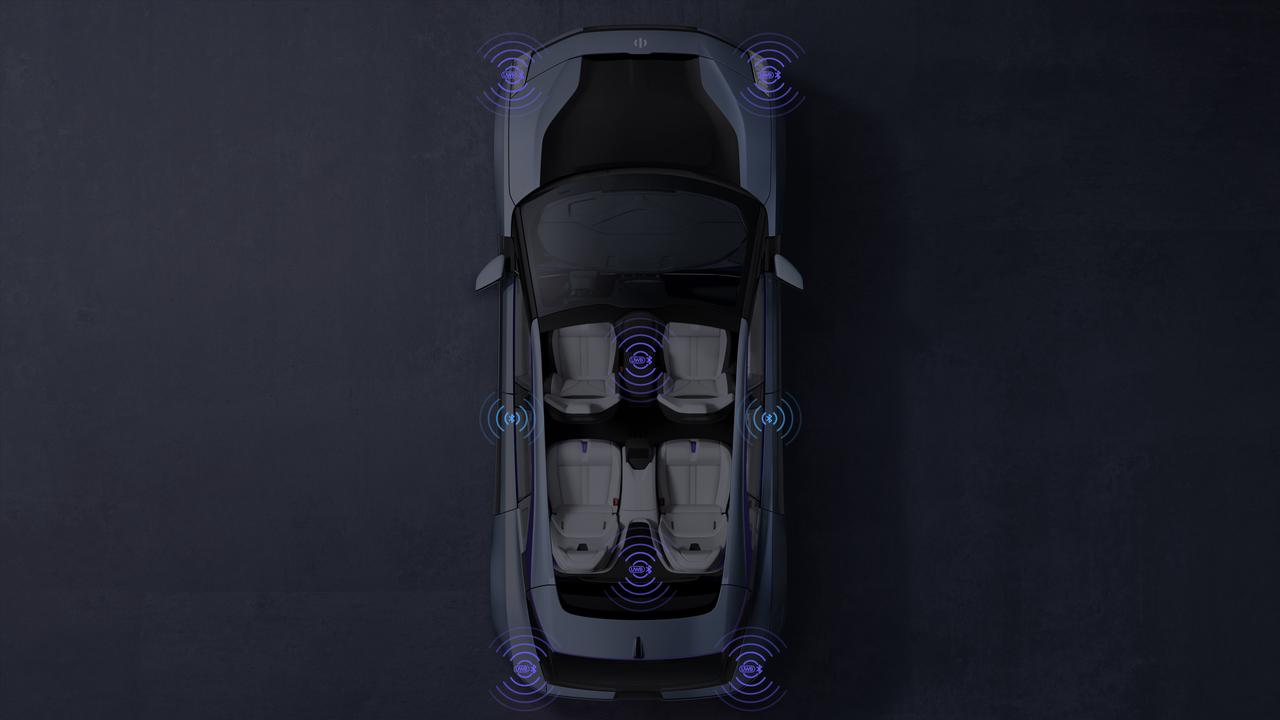 On HiPhi Z, GWM has brought the iconic NT gull-wing doors from HiPhi X over. However, due to the vehicle’s longitudinal height, the rear doors do not feature the split design like HiPhi X, but keep the conventional front and rear side-by-side opening design. To make the door opening more intelligent and delicate, GWM introduces UWB ultra-wideband wireless communication technology with 10cm level positioning, which can better control the opening time and angle of the doors without handles.
On HiPhi Z, GWM has brought the iconic NT gull-wing doors from HiPhi X over. However, due to the vehicle’s longitudinal height, the rear doors do not feature the split design like HiPhi X, but keep the conventional front and rear side-by-side opening design. To make the door opening more intelligent and delicate, GWM introduces UWB ultra-wideband wireless communication technology with 10cm level positioning, which can better control the opening time and angle of the doors without handles.
As a GT model, HiPhi Z also features well-designed hardware for handling, including:
-
Standard full-aluminum front double wishbone suspension and rear five-link suspension, plus air suspension and CDC;
-
Max rear-wheel steering angle of 13.2° and turning radius of 5.7m;
-
IVC vehicle dynamics control system.
Compared to HiPhi X with the same wheelbase (10° and 5.8m, respectively), HiPhi Z shows a slight improvement. Furthermore, to enhance the aerodynamic performance, HiPhi Z integrates the AGS active intake grille with the external grille, which can work together with the active air suspension wing at the rear end. The wing will automatically open when the vehicle speed reaches 80 km/h, increasing the downforce.
Moreover, GWM designs the 22-inch wheel rims on HiPhiZ as soft wheel rim inserts, which can be dismantled and replaced by car owners themselves to protect the wheel rims. The showcased model is equipped with Michelin Pilot Sport EV tires in size 285/40 R22, which are high-performance tires with a large aspect ratio and wide tire tread.
For the audio in HiPhiZ, GWM didn’t choose to make a traditional high-power, multiple-speaker system, but rather partnered with the British audio brand Meridian. The two companies together modulate 23 speakers and a 1920W output power. We are looking forward to experiencing the actual sound quality.
Is HiPhiZ a production concept?At the end of last year, Gaohe unveiled the HiPhi Z concept car. Although it is a concept, Gaohe claims that 95\% of it will be put into production. The HiPhi Z that debuted this time fully embodies almost all of the functions and designs of a concept car.
Star Ring ISD Screen
In terms of appearance, the most distinctive feature is that the interactive light group on the HiPhi X has been extended to the car doors. The side door ISD intelligent interactive light is composed of 1,314 LEDs, and the array LED running through the front and rear doors can display statements line by line and column by column. The interactive headlights on the side doors, front, and rear of the car, consisting of 4,066 LED light units, together form the “Star Ring ISD Screen” that surrounds the entire body of the car.
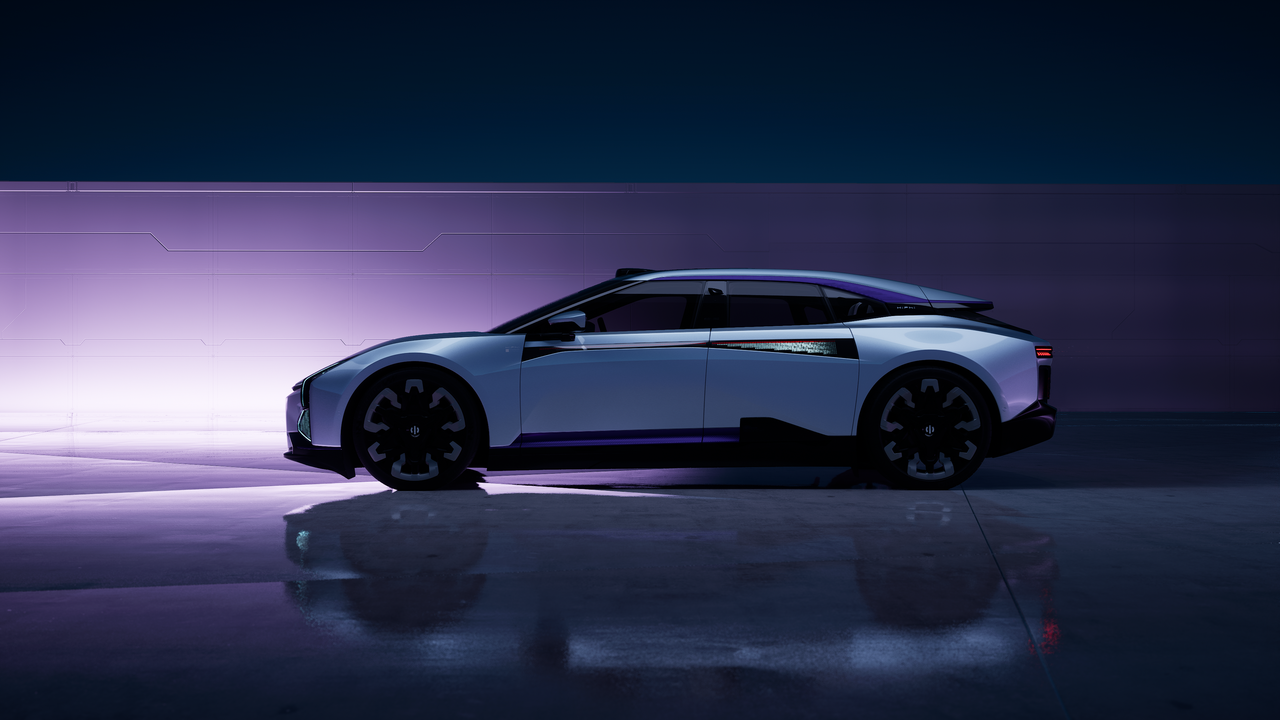
During the presentation, I saw that the vehicle can not only display with anthropomorphic sentiment through the light strip surrounding the body, such as the headlights displaying eyes, but also connect to external speakers and directly call your name or compliment your female companion. This aroused my curiosity again. Can this car perceive the gender of passengers other than non-owners who are in its vicinity?
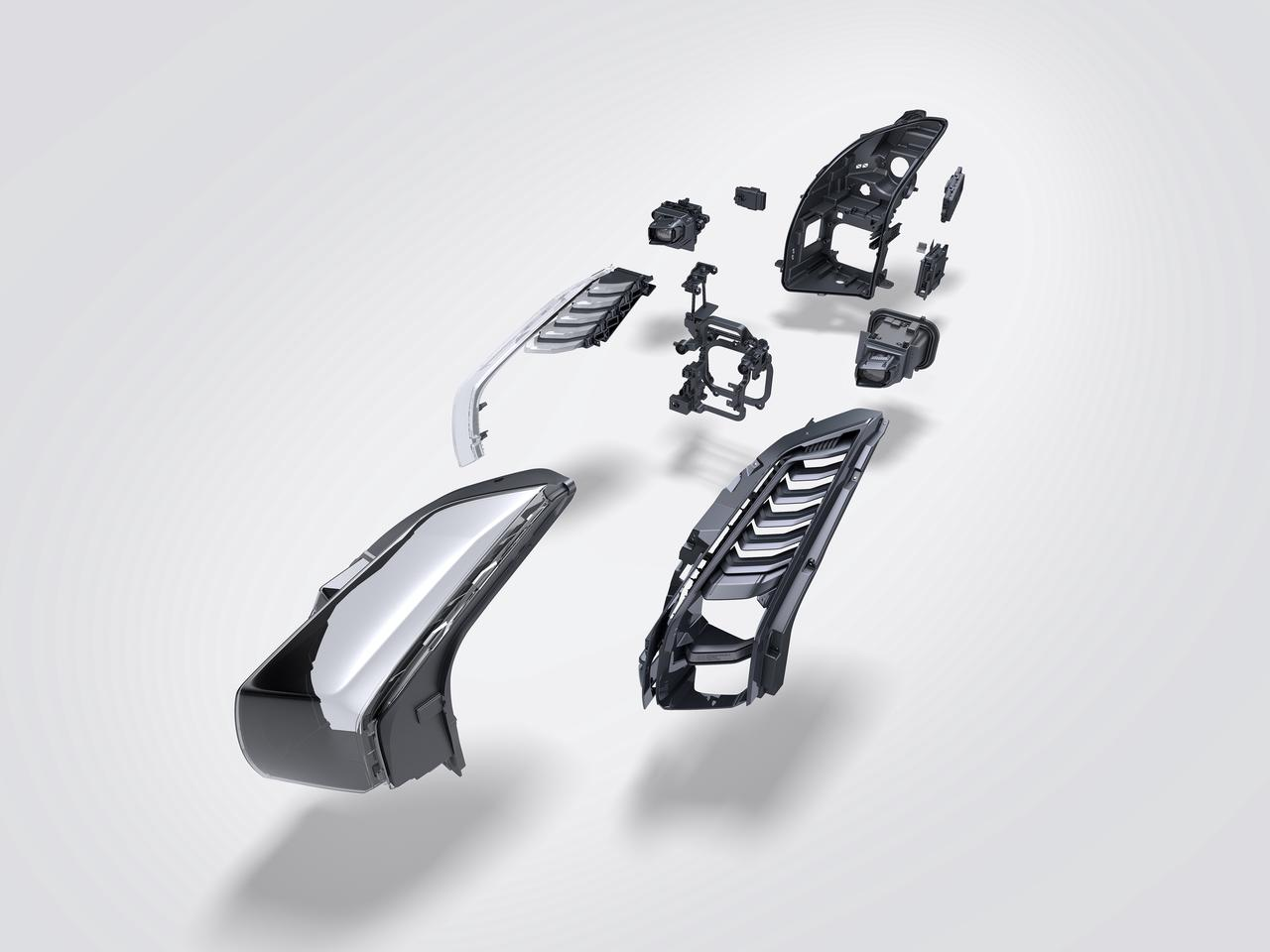
Of course, the PML programmable intelligent headlight has also been upgraded to the second generation. Perhaps considering the user’s love and frequent use of this function, a new generation of air-cooled modules have been specially used to enhance heat dissipation, while also improving the integration of the module.
HiPhi Bot
On the HiPhi Z concept car, the coolest feature we see is probably the HiPhi Bot, which supports automatic angle adjustment.
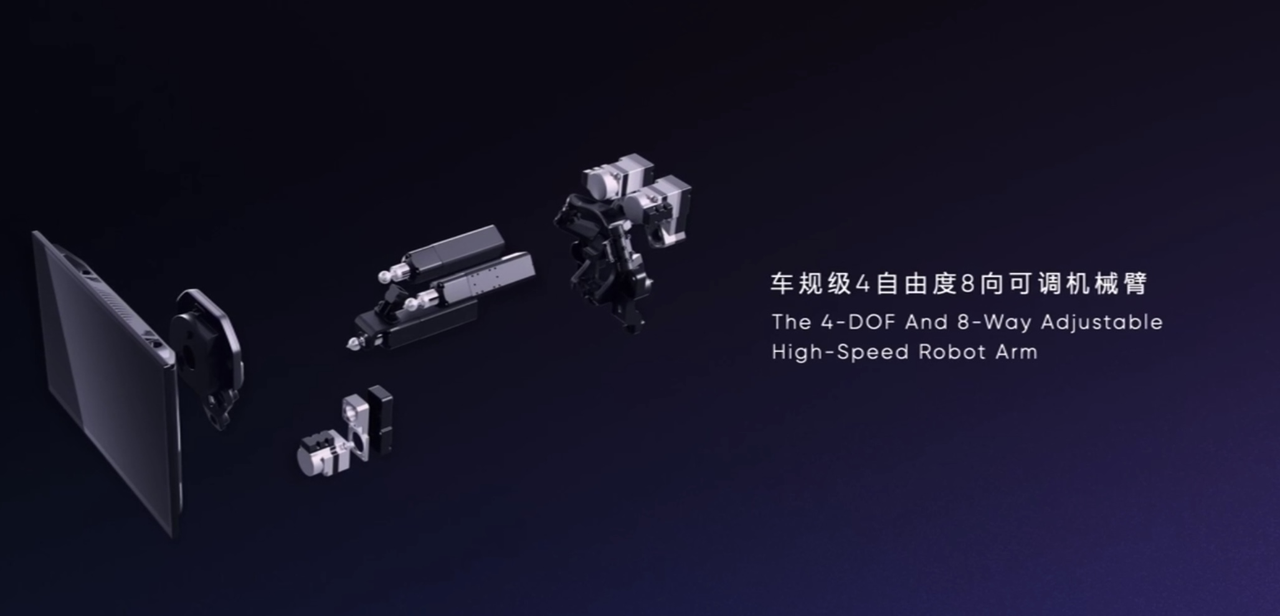
The mechanical structure behind it is a mechanical bracket that supports eight-directional adjustment and has four degrees of freedom. As the interactive core, HiPhi Bot supports sound positioning. From the demo video, it can be seen that its reaction is very sensitive. Gaohe also provides data:
-
Forward and backward movement is completed in one second;
-
Switching between horizontal and vertical screens is completed in two seconds;
-
High-frequency swings in all directions can be achieved three times per second.This experience is even more impressive than the anthropomorphized approach of NIO’s NOMI, because it is a central screen that rotates towards you. Of course, I am curious about the anti-pinch design and resistance identification capability of this mechanical mechanism. On the HiPhi X, Gaohe has already mastered HiPhi Play very well, and with the introduction of this HiPhi Bot on the HiPhi Z, the playability is bound to be further enhanced.
The car system of the HiPhi Z will be developed using the EPIC Unreal Engine, so I can expect an improvement in the smoothness and 3D rendering of Gaohe’s car system.
If you look closely at the interior of HiPhi Z, the steering wheel has become a perfect circle. At the same time, Gaohe replaced the touchpad on the HiPhi X’s steering wheel with touch buttons on the HiPhi Z. In addition, to enhance the “ship” feeling of the cabin, Gaohe even used a crystal gear shift knob in the center console. Combined with the ambience lights that shine through the punched leather and the double-layer dual-color injection molding process (2K process) and high-transparency smoked black materials used on the instrument panel, they all work together to create a sense of being on a “ship”.
Advanced Driver Assistance System (ADAS)
On the sensing hardware of HiPhi Z, Gaohe has kept up with mainstream configuration, with a total of 32 sensors and the Orin-X computing platform:
- 1 laser radar
- 8 perception + 4 panoramic view
- 5 millimeter wave, 12 ultrasonic
- DMS camera
- Hand-off detection sensor
According to Gaohe’s official announcement, with the high-precision map and positioning module, the maximum detection distance in the forward direction can reach 250 meters. Gaohe also has a clear timeline for their advanced ADAS software, which includes intelligent summoning, traffic light recognition, navigation auto-assisted driving to the destination, and home area automatic parking assistance. These functions will be launched in stages starting in 2023. Additionally, in Gaohe’s demonstration, I also saw interactive signal lights, which participated in the display of these ADAS functions.
Battery
The HiPhi Z will be equipped with a solid-state battery pack developed by Gaohe with a maximum range of 1,000 kilometers (620 miles).HiPhi Z is equipped with CTP (Cell to Pack) technology, and has a battery capacity of 120 kWh, which can provide CLTC with a range of 705 km.
To explain CTP technology again, the most mainstream battery packaging process currently follows the CTM (Cell to Module) process, which involves a three-level assembly process of “cells-modules-battery pack” before it reaches the vehicle chassis. CTP removes the module in these three levels and allows more batteries to be packed into the battery pack.
On the HiPhi Z model, the result is that it has a 120 kWh battery, compared to the 97 kWh battery on the HiPhi X, and HiPhi Z is also a sedan.
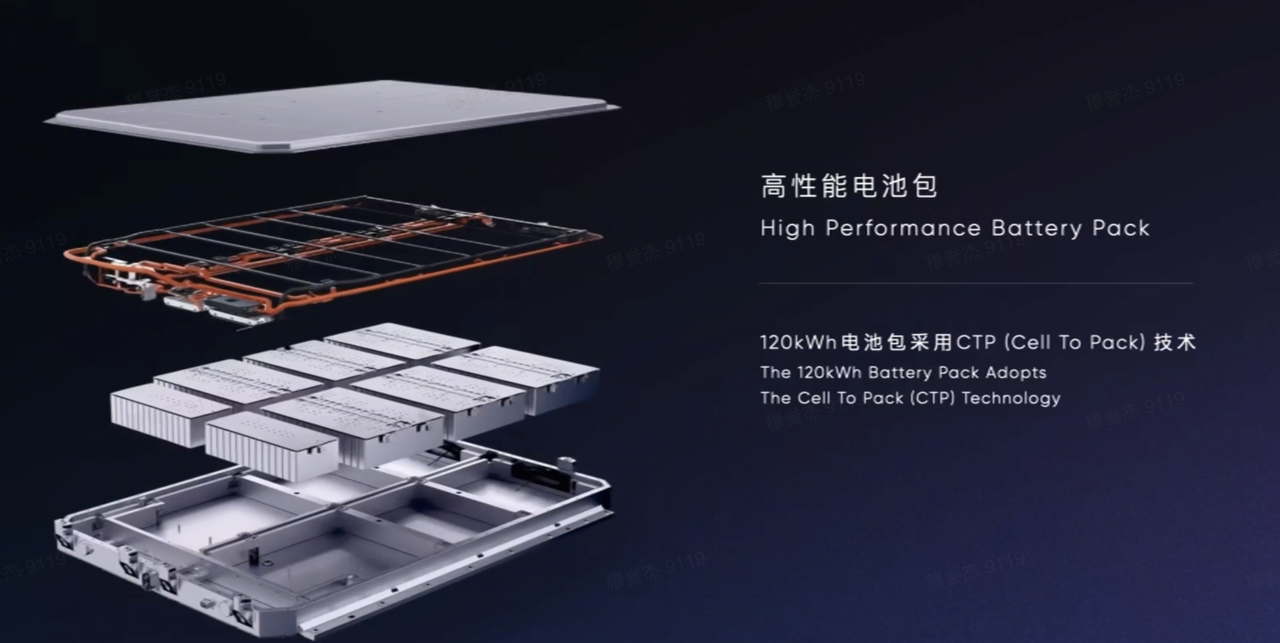
At the unveiling event, Gaohe also emphasized the safety of this battery. It employs the concept of fire-fighting spraying and directs cooling liquid from the thermal management system to spray any abnormal cells, enhancing the safety of the battery pack.
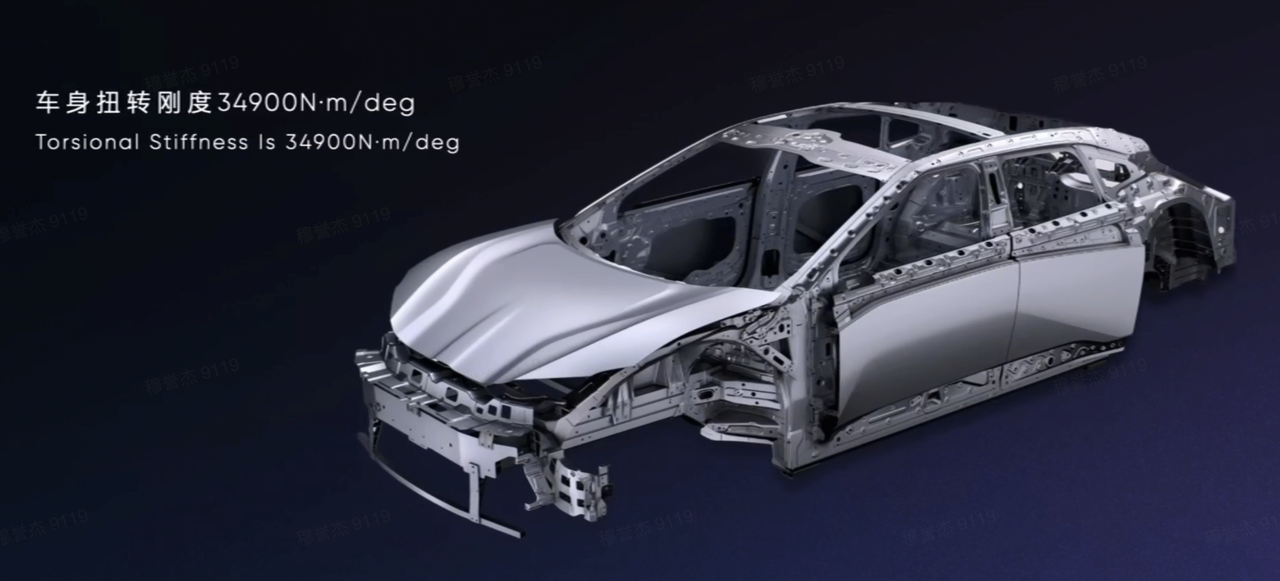
CTP can increase the torsional stiffness of the vehicle to some extent, and Gaohe has directly added a support beam in the front compartment.
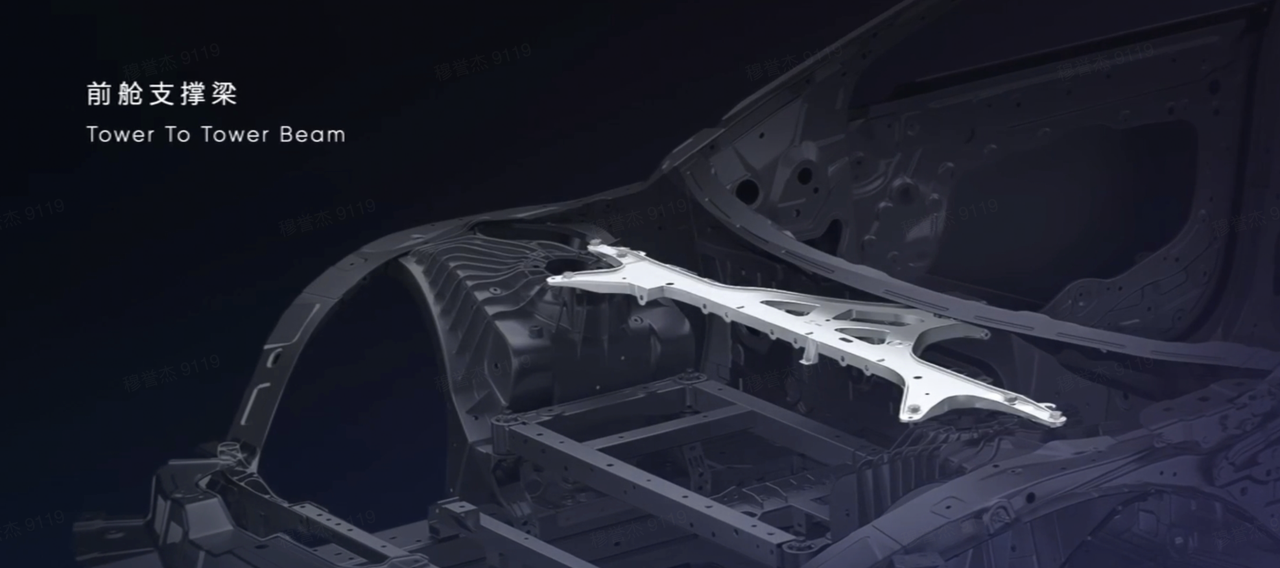
Usually, a support beam connects the left and right suspension tower tops to provide lateral support. Many cars use a transverse rod to connect the left and right wheel arches together to improve stiffness. Most car companies use simple-shaped aluminum or steel pipes to connect two points into a line. On the HiPhi Z, Gaohe extends these two points into a fork-shaped aluminum casting, which connects not only the two wheel arches, but also forms a more stable triangle through connection with the cabin.
Gaohe official data shows that the local stiffness increases by 20-50\%, and the overall body stiffness of the HiPhi Z reaches 34,900 N·m/deg.
In conclusion,
after a rough summary of the information on Gaohe’s second model, the HiPhi Z, it can be seen that it optimizes and complements the HiPhi X in many ways. So, why did Gaohe do this “dual-flagship” strategy in the first place?
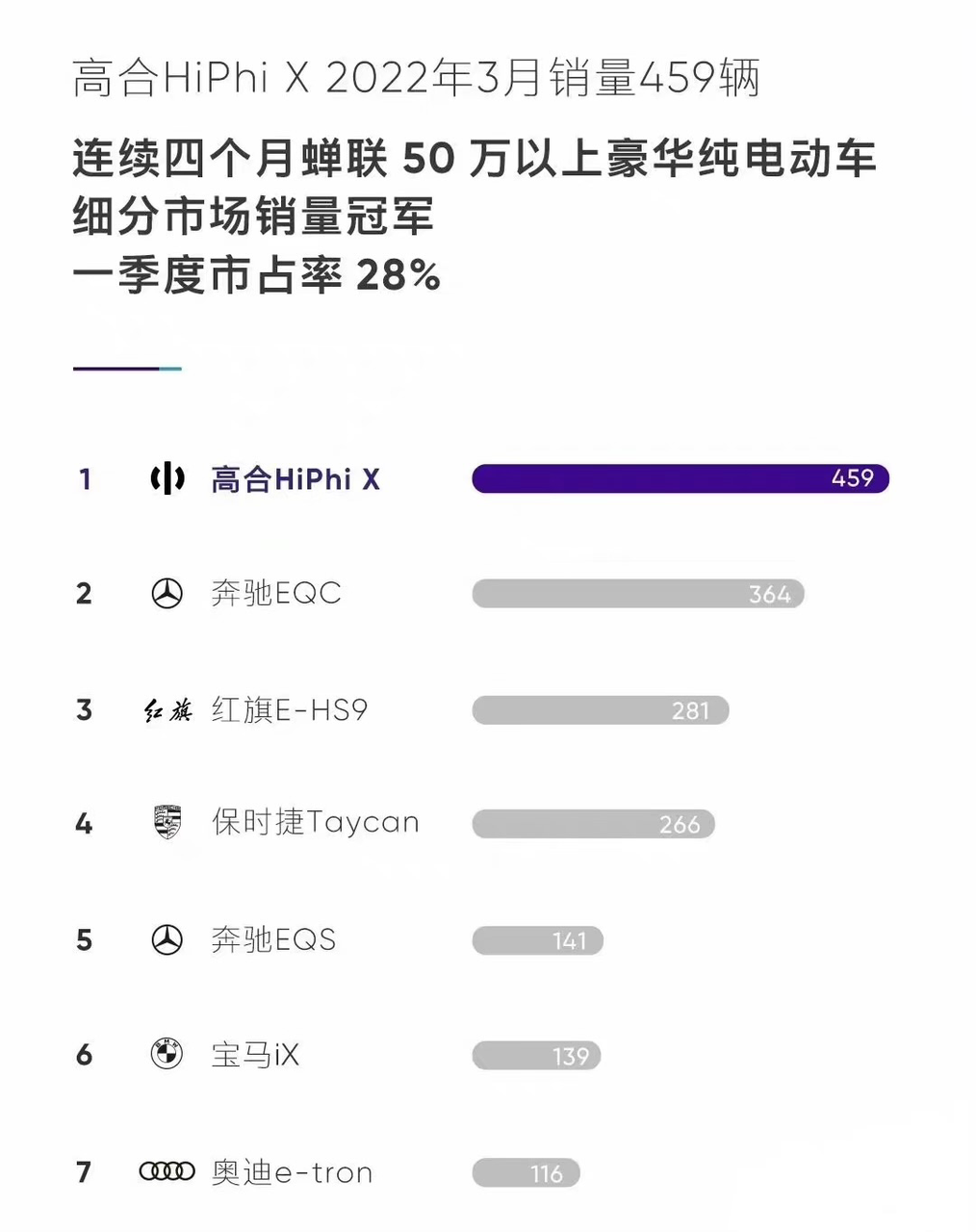 The reason is simple: GAC Aion has already gained some brand appeal in the true high-end pure electric vehicle market, as evidenced by both its sales figures and comparisons with other competitors in the same price range.
The reason is simple: GAC Aion has already gained some brand appeal in the true high-end pure electric vehicle market, as evidenced by both its sales figures and comparisons with other competitors in the same price range.
Having spent so much time in the true high-end market, GAC Aion has realized that the domestic newcomers are just starting to compete in the 300,000 to 500,000 RMB price range, with no real competitors in the 500,000 to 800,000 RMB range. Therefore, introducing a new flagship model at a similar price point, using familiar tactics to further polish the product and further dominate this blue ocean market, seems like a logical move.
This article is a translation by ChatGPT of a Chinese report from 42HOW. If you have any questions about it, please email bd@42how.com.
